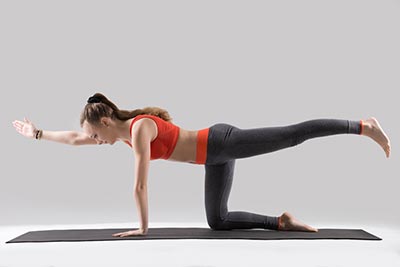
Getting the most out of your health and fitness habits isn’t always about blog-length principles or the most perfect way to do things.
Often, some of the advice you need to hear is hidden behind the cool, sexy stuff. The best ways to beat aging, injury, and maximize your return from the effort you put into your lifestyle are hidden behind the noise of other things.
Today we’re going to go through 12 of the small things you can do to make sure you’re getting the most out of your health and fitness. They’re going to cover things that impact performance, health, and fitness in ways, big and small, that you can start applying the moment you’re done reading.
Pause on each one and give yourself a little bit of time to think about how you’re dealing with them now, and what you could do to improve.
12 Tips To Better Training At Any Level Of Experience
The fun part of what we’re looking at today is that they cover benefits for everyone. Whether you’re just into regular exercise for the first time in your 60s, or you’re an experienced 20—something elite, there’s value to reflecting on these issues.
They’re all aimed at improving function from where you are now, and there’s pretty much no upper limit to the way you can think about and apply them.
So, whatever your goals or needs, they’re worth looking into at least enough to consider that you might not have it all perfect just yet…
Concurrent Training
Training strength and endurance simultaneously is coming back into style, but it’s always been great.
Properly training your musculature and your cardiorespiratory “engine” is key for health and fitness. The idea is to take the “loss of functional capacity” we see in the elderly and reverse it: opt for maximal functional capacity.
This means a combination of smart strength/hypertrophy training with equally-smart endurance training. Work it across the things you like to do, but make sure you’ve got a combination of sprint intervals and longer endurance pieces.

Proper Caffeine Management
Caffeine is pretty great, but it’s easy to use it poorly.
Caffeine management is a simple concept: look at when you drink coffee or other caffeine sources through a day and be on top of it. Shift from coffee to tea in the afternoons to support better sleep quality and promote a relaxing environment.
Watch the overall intake, be smart with timings (6hr no-caffeine window before bed), and you’ll make up the difference in sleep and diet quality.
Sleep rituals/routines
This is a step beyond managing caffeine. Manage your whole bedtime routine – whatever that means for your individual circumstances.
Your sleep is the north star of your recovery and you should put time and effort into making it better. It’s going to pay you back immediately with better results from training and better mental energy/performance.
Implement caffeine control, set out a 30-60-minute window of relaxing time before bed, and make sure you’re sleeping in a dark room with all electronics away. Buy a manual alarm clock if you have to, but we’re trying to minimize blue light and distractions once you’re in bed.

Nutritional Easy Tweaks: Carb-Controls
Your carb-sources alone can make a huge difference. If you’re getting high quality foods in this category you’ve basically set the foundation for dietary success.
High-quality carbs are those which:
· Are rich in complex starches
· Medium to high fiber content
· Micronutrient-dense
· And/or include a medium protein content
These are the foods, like kidney beans, that you should be aiming for. If your diet includes a significant quantity of high-quality carbs and a few good protein sources, you’ve done the majority of the work.
Throw in a variety of fibrous veggies and you’ve nailed the healthy-eating thing for general purposes.
Nutritional Easy Tweaks: Staple Meals
Getting the logistics of good eating down can be as challenging as the science of a perfect diet. Reality tends to push back against our best intentions.
Having staple meals is an easy way to prepare for these kinds of issues. Staple meals when you’re at home, staple meals when you’re in a pinch and have little prep time, and staple meals you’d grab from the shop on-the-go if you had to.
Set up a few in the first 2 categories and at least one in the last. They’ll help to support better dietary choices which support better injury-resilience and results in general.
Being prepared for chaos helps you deal with it when it inevitably arrives. It pays to be prepared.

Those Other Exercises: Prehab
Do your prehab exercises religiously. This means things like face pulls, band pull-aparts, front-loaded good mornings, single-leg work, and slow, paused leg extensions.
I don’t want to hear “Oh, but that joint is doing fine right now”. Sure it is, but that’s because of the work you’ve done in the past. Joint preparation and injury-resilience is built on the back of exercises that you could easily ignore.
Add at least one of these to the end of each session, rotating every session, and you’ll accumulate some real long-term volume. It doesn’t need to be complicated: it just needs to be a single exercise every day that works to build strength and control in an easily-injured area.
This goes double for anyone reading this with a historic injury or “problem area”. Get it done.
Those Other Exercises: Core Training for People Who Hate Training Core
Core training is prehab, in a sense. It’s protecting the most important joints in the body … the spine. It also attaches to the shoulders and hips, which are pretty important, too!
A lot of people hate core training, and I can see why. However, it’s not optional, for sport or general health and fitness.
If you’re really struggling to get into the core training habit, I recommend getting a few exercises and going to failure with them sequentially each training session. Finding a few that you like, and feel are effective, then doing each of them until you can’t anymore.
It’s an easy way to get in a lot of volume in the core and it’s also going to be easy to see when/where you’re progressing. Make sure it involves one lateral and one rotating exercise every time.

Properly Structuring Your Accessory Exercises
Making accessory exercises harder in ways that aren’t just adding more weight is pretty amazing.
Exercises like the front-loaded good morning and the deficit Bulgarian split squat add real training value without adding too much recovery demand. They train other factors besides muscular strength, and they challenge your control over movement in new, or at least interesting ways.
Getting into the habit of making accessory exercises weird in productive ways is great. Focus on things like additional range of motion, increased requirement for control and postural strength, and addressing the movement patterns you know you struggle with.
This helps you remain prepared in all joints and at all angles. It’s a simple way of making exercises you’re already doing more productive at no real extra cost.
Appropriate Resistances
We’ve talked about it before, but consider working with different types of resistance. We all have our favourites, whether it’s free weights, cables, or bodyweight.
The reality is that proper variety here can be a useful resilience tool. Even the strongest powerlifters and weightlifters benefit from caring for their body with light cable and elastic resistance exercises. These help us get outside of the high-demand training we are used to and focus on joint care.
It’s easy to get the most out of these exercises – we did a whole article on it – but the cliffs are these: use them for high-volume sets on problem areas, use them to practice deliberate movement or mechanics on a joint, and use them to strengthen end-ranges.[LGR1]
These are great choices that – again – overlap with things like prehab exercises. They’re a great way to round out a training week. Put a cherry on top of the heavy work and show your body some love.

Resting Appropriately: Experimenting With Programme Set-Up
Once again, it’s easy to get stuck into some personal conventions. There are a lot of training configurations out there and you should probably be experimenting with them.
Things like the ratio of rest/training days are obvious. They’re also something we can easily get on a treadmill with and never change or improve. I’ve talked to dozens of trainees who got on a Monday-Wednesday-Friday training program and … just kept doing it.
That’s fine, but it’s probably going to be useful to play around with timings if you have the freedom to do so in your schedule. Especially if you’re finding yourself tired by the end of a workout, or like you’re always fresh.
Play around more, and be willing to struggle here and there, for that experimentation. If you’re not working on a highly specific program, right now is the time to play around with variables and see what suits you.
Learning To Keep It In The Tank And Stay Behind The Crest Of The Wave
This is the lesson that I have seen proven most often, even compared to the seemingly obvious ones on this list.
You need to learn to stay behind the wave of adaptation. If you gained 10kg of strength on a lift this month, then you should be lifting 5-7.5kg more; you don’t need to immediately max out on things because progress has happened.
That’s not to say you shouldn’t be trying hard, but rather that the appropriate response to strength improvements is to produce more of them and be glad for it. Not to waste a session because you’re wondering just how far you can push it today, even when you’re not meant to.
The chunkiest, most robust training responses come from staying just behind what you could do if you absolutely hammered yourself. A good week of training is always more important than a good day. And packing those good days tight relies on the restraint to not hurt yourself.
Both performance and injury-resilience rely on mastering this simple principle: stay behind the crest of the wave.

Closing Remarks
There are tons of other small things, and maybe we’ll cover them all someday, but these are the ones that you can start working on, or just reflecting on, today.







